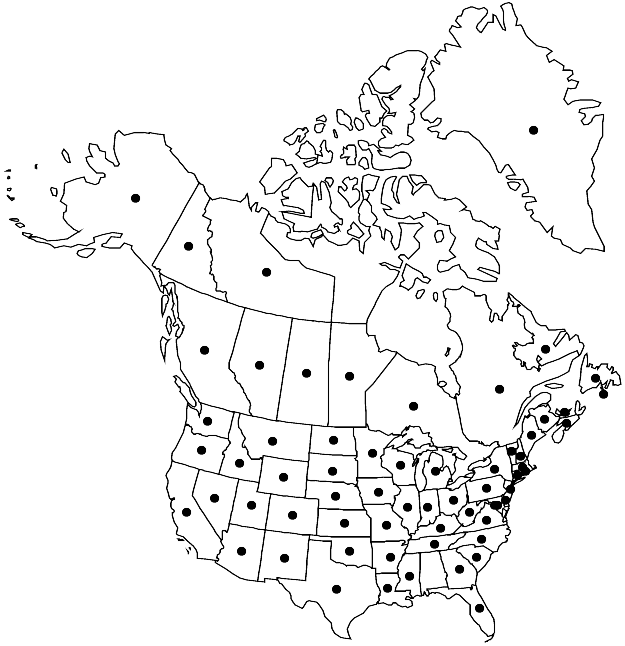Sinapis arvensis
Sp. Pl. 2: 668. 1753.
Plants hirsute, hispid, or glabrous. Stems unbranched or branched, (0.5–) 2–10 (–21) dm, (often hirsute or hispid, sometimes glabrous, trichomes retrorse or spreading). Basal leaves: (proximal) petiole 1–4 (–7) cm; blade obovate, oblong, or lanceolate, (3–) 4–18 (–25) cm × 15–50 (–70) mm, margins lyrate, pinnatifid, or, sometimes, undivided; lobes 1–4 each side, margins of terminal and smaller lateral lobes coarsely toothed, (surfaces sparsely pubescent). Cauline leaves usually shortly petiolate, rarely subsessile; blade margins often not divided, coarsely toothed. Fruiting pedicels ascending or suberect, (2–) 3–7 mm. Flowers: sepals (yellow or green), (4.5–) 5–6 (–7) × 1–1.8 mm; petals bright-yellow, (8–) 9–12 (–17) × (3–) 4–6 (–7.5) mm; filaments (3–) 4–6 mm; anthers 1.2–1.5 mm. Fruits linear, (1.5–) 2–4.5 (–5.7) cm × (1.5–) 2.5–3.5 (–4) mm; valvular segment terete, (0.6–) 1.2–3.5 (–4.3) cm, (2–) 4–8 (–12) -seeded per locule; terminal segment (straight or upcurved), conical or subulate, terete, (0.7–) 1–1.6 cm, shorter than valves, seedless or 1-seeded; valves glabrous or pubescent, trichomes of 1 type. Seeds reddish-brown to black, (1–) 1.5–2 mm diam. 2n = 18.
Phenology: Flowering Mar–Oct.
Habitat: Roadsides, waste places, disturbed areas, fields, grain fields, orchards
Elevation: 0-1800 m
Distribution

Introduced; Greenland, St. Pierre and Miquelon, Alta., B.C., Man., N.B., Nfld. and Labr., N.W.T., N.S., Ont., P.E.I., Que., Sask., Yukon, Alaska, Ariz., Ark., Calif., Colo., Conn., Del., D.C., Fla., Ga., Idaho, Ill., Ind., Iowa, Kans., Ky., La., Maine, Md., Mass., Mich., Minn., Miss., Mo., Mont., Nebr., Nev., N.H., N.J., N.Mex., N.Y., N.C., N.Dak., Ohio, Okla., Oreg., Pa., R.I., S.C., S.Dak., Tenn., Tex., Utah, Vt., Va., Wash., W.Va., Wis., Wyo., Eurasia, also in Mexico, West Indies, Central America, South America (Argentina), nw, s Africa, Atlantic Islands, Australia
Discussion
Infraspecific taxa have been recognized in Sinapis arvensis on the basis of minor variation in fruit and basal leaf morphology, but the species is extremely variable, and none of the variants is recognized here.
Sinapis arvensis is one of the most widespread and abundant weeds of cultivated grain fields in North America, causing crop losses and acting as host for viruses and fungi that also attack some cruciferous vegetable crops (G. A. Mulligan and L. G. Bailey 1975; I. A. Al-Shehbaz 1985; R. C. Rollins and Al-Shehbaz 1986). It is generally considered a native of Eurasia and is thought to have been introduced into the New World by European settlers about 400 years ago. Recent archaeological and ethnobotanical studies (H. A. Jacobson et al. 1988) indicate that it (as Brassica kaber) grew in the northeastern United States as early as 8000 years ago and suggest that it originally had a semi-circumboreal distribution.
Selected References
Lower Taxa
"elongated" is not a number."thick" is not a number."dm" is not declared as a valid unit of measurement for this property."dm" is not declared as a valid unit of measurement for this property.